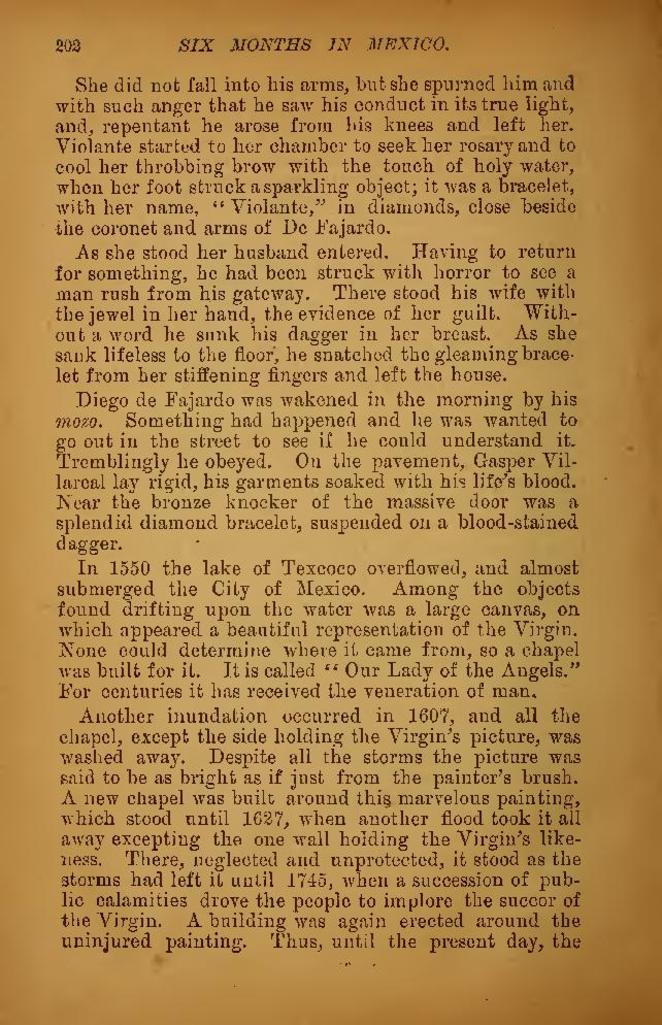She did not fall into his arms, but she spurned him and with such anger that he saw his conduct in its true light, and, repentant he arose from his knees and left her. Violante started to her chamber to seek her rosary and to cool her throbbing brow with the touch of holy water, when her foot struck a sparkling object; it was a bracelet, with her name, "Violante," in diamonds, close beside the coronet and arms of De Fajardo.
As she stood her husband entered. Having to return for something, he had been struck with horror to see a man rush from his gateway. There stood his wife with the jewel in her hand, the evidence of her guilt. Without a word he sunk his dagger in her breast. As she sank lifeless to the floor, he snatched the gleaming bracelet from her stiffening fingers and left the house.
Diego de Fajardo was wakened in the morning by his mozo. Something had happened and he was wanted to go out in the street to see if he could understand it. Tremblingly he obeyed. On the pavement. Gasper Villareal lay rigid, his garments soaked with his life's blood. Near the bronze knocker of the massive door was a splendid diamond bracelet, suspended on a blood-stained dagger.
In 1550 the lake of Texcoco overflowed, and almost submerged the City of Mexico. Among the objects found drifting upon the water was a large canvas, on which appeared a beautiful representation of the Virgin. None could determine where it came from, so a chapel was built for it. It is called "Our Lady of the Angels." For centuries it has received the veneration of man.
Another inundation occurred in 1607, and all the chapel, except the side holding the Virgin's picture, was washed away. Despite all the storms the picture was said to be as bright as if just from the painter's brush. A new chapel was built around this marvelous painting, which stood until 1627, when another flood took it all away excepting the one wall holding the Virgin's likeness. There, neglected and unprotected, it stood as the storms had left it until 1745, when a succession of public calamities drove the people to implore the succor of the Virgin. A building was again erected around the uninjured painting. Thus, until the present day, the
